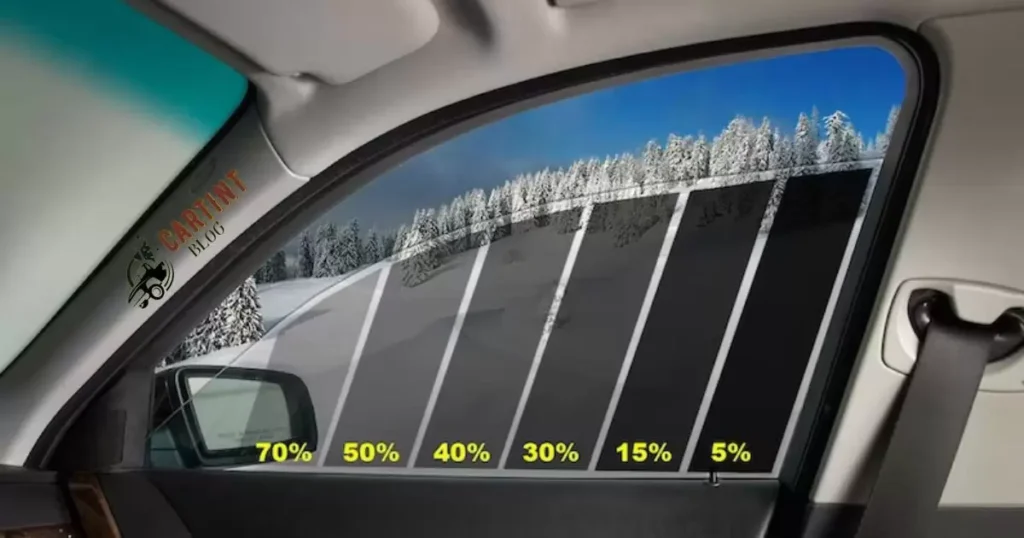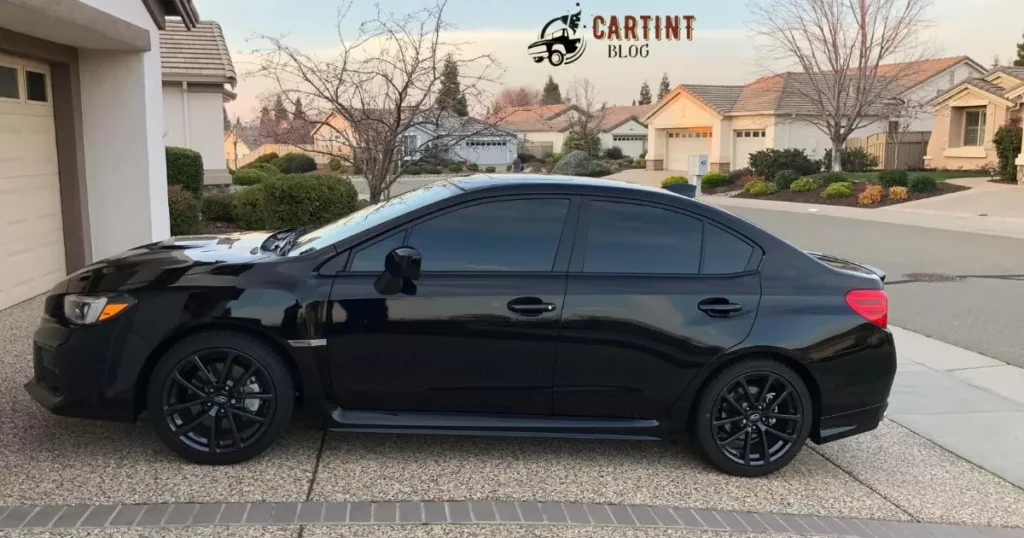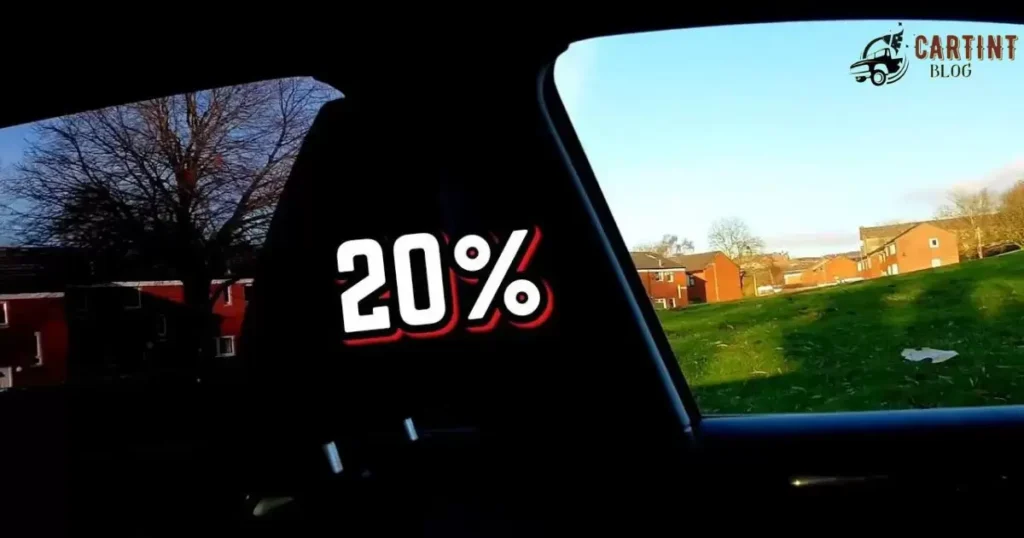In Arizona, the legal limit for window tint is 33%. This means that the tint on vehicle windows must allow at least 33% of light to pass through. Going darker than this limit may result in fines or penalties. It’s important to follow this regulation to ensure safe visibility while driving.
What percent tint is legal in AZ? Understanding this regulation is crucial for vehicle owners in the state. Discovering the permitted window tint percentage in Arizona is not only informative but also essential for staying on the right side of the law while cruising the roads.
Stay with us to learn more about the legality of window tint percentages in Arizona! Understanding the permitted tint levels is crucial for ensuring compliance with state regulations while driving. Explore further to grasp the specifics and stay informed about the allowable tint percentage in AZ.
Can You Have A Front Side Window And Windshield Tint In Arizona?
In Arizona, you can have tint on your front side windows, but it must meet specific regulations. The legal limit for the front side windows is 33% light transmission. The windshield can only have a non-reflective tint strip on the topmost six inches.
Complying with these rules is essential to avoid fines or penalties while driving in Arizona. Ensuring your front side window tint adheres to the 33% light transmission and using only the designated strip on the windshield keeps you in line with the state’s tinting laws.
Are There Window Film Reflectivity And Tinting Color Laws In Arizona?
Arizona has specific laws regarding window film reflectivity and tinting colours. These laws dictate the acceptable levels of reflectivity for window films used on vehicles. There are regulations about the tinting colours allowed on different windows of a vehicle, ensuring compliance with these guidelines is crucial for drivers in Arizona to avoid penalties.
The laws in Arizona outline the maximum levels of reflectivity that window films can have, emphasizing the importance of adhering to these standards. Furthermore, they specify the permissible colours for tinting various windows, offering clarity on what is acceptable under the state regulations.
Medical Exemptions For Window Tint Laws In Arizona
In Arizona, medical exemptions exist for window tint laws. These exemptions allow individuals with certain medical conditions to have darker window tints than the standard legal limit of 33%. Those with conditions like lupus, melanoma, or light sensitivity can apply for these exemptions with proper documentation from a licensed physician.
These exemptions enable individuals to prioritize their health needs while driving. They grant permission for darker tints to manage sunlight exposure, ensuring comfort and safety for those medically sensitive to light. Meeting the necessary criteria and obtaining medical documentation are crucial steps for availing oneself of these exemptions in Arizona.
Legal Window Tint Certificates In Arizona
- Legal window tint certificates in Arizona are essential for vehicle owners to demonstrate compliance with state tinting regulations.
- These certificates verify that the installed window tint meets the permissible levels set by Arizona law, typically allowing up to 33% light transmittance.
- Certificates are issued upon successful inspection by authorized personnel, confirming that the window tint adheres to state standards.
- Possessing a valid window tint certificate is crucial to avoid fines or penalties for non-compliance with Arizona’s tinting laws.
- The certificate should be kept in the vehicle as proof of compliance and may be requested by law enforcement officers during routine checks.
Window Tint Violation Penalties In Arizona

In Arizona, violating window tint regulations carries penalties. Law enforcement may issue fines for exceeding the allowed tint percentage. If found with illegal tint, you might face fines and be required to remove or adjust the tint to comply with state law promptly.
Failure to adhere to Arizona’s window tint laws can result in financial penalties. Law enforcement officers enforce these regulations and may issue fines on the spot. To avoid these penalties, ensure your window tint aligns with the permissible limits in Arizona to drive legally and hassle-free.
Window Tinting Exemption In Arizona
In Arizona, there exists an exemption for window tinting, allowing certain individuals to have darker tint on their vehicle windows. This exemption is primarily applicable to those with medical conditions that necessitate protection from sunlight.
Individuals with medical certificates can obtain permits allowing a higher percentage of tint than the standard limit of 33%.This exemption enables individuals with light-sensitive medical conditions to comfortably travel in their vehicles without being overly exposed to sunlight.
Arizona Window Tinting Exemption Form
In Arizona, if you’re looking to tint your vehicle windows beyond the legal limit, you can apply for an exemption using the Arizona Window Tinting Exemption Form. This form allows you to request permission for tint percentages lower than the state’s regulated standards.
Simply fill out the form with the necessary details and submit it to the appropriate authorities for consideration.The Arizona Window Tinting Exemption Form is a straightforward process that grants individuals the opportunity to explain their need for tinted windows beyond the standard legal limit.
By completing and submitting this form, drivers in Arizona can seek permission for window tint percentages that deviate from the state’s regulations, ensuring they comply with the law while addressing their specific requirements.
Arizona Window Tint Rules And Regulations
| Aspect | Regulation |
| Front Side Windows | Maximum 33% light transmittance allowed |
| Exemption | Exemption form available for tint below limit |
| Rear Windows | Any darkness permitted with both side mirrors |
| Enforcement | Non-compliance may lead to fines or penalties |
| Medical Exemption | Some medical conditions allow darker tints |
This table summarizes the key regulations concerning window tinting in Arizona, covering limits, exemptions, enforcement, and allowances for rear windows and medical conditions.
Darkest Legal Tint For Sedans In Arizona
In Arizona, sedans are allowed to have window tints up to 33% darkness. This means that at least 33% of light must pass through the tinted windows. It’s crucial for sedan owners to adhere to this limit to avoid potential fines or penalties.
Understanding the legal tint in Indiana ensures adherence to state regulations and safe driving. It’s crucial to note that surpassing the prescribed darkness limit, typically 30-40% for sedans, can result in legal repercussions. Maintaining compliance with The Legal Tint In Indiana ensures both safety and legal conformity while on the road.
Maintaining awareness of this regulation helps sedan owners make informed decisions about their window tint choices. Adhering to the darkest legal tint percentage in Arizona for sedans ensures both compliance with the law and safe driving conditions.
Darkest Legal Tint For Suv And Vans In Arizona
Arizona permits window tinting for SUVs and vans, with the darkest legal tint being 33%. Vehicle owners must ensure that their SUVs or vans comply with this regulation, allowing at least 33% of light to pass through the tinted windows. Adhering to this limit is crucial to avoid potential fines or penalties while enjoying the benefits of tinted windows in your SUV or van.
Drivers in Arizona must be aware that exceeding the 33% tint limit on SUVs and vans can result in legal repercussions. It’s essential to maintain compliance with this restriction to ensure safe visibility while driving. Understanding and adhering to the darkest legal tint for SUVs and vans in Arizona is vital for all vehicle owners.
Is It Legal In Arizona For My Tint To Be Dark Or?

In Arizona, the law sets a specific limit for how dark vehicle window tints can be. If your window tint is too dark and falls below the legal threshold of 33%, you might face penalties. Understanding the permissible tint levels in Arizona is crucial to avoid potential fines and ensure compliance with the state’s regulations.
It’s important to note that exceeding the specified limit can lead to issues with law enforcement. To stay on the right side of the law, it’s recommended to familiarize yourself with Arizona’s tinting regulations and ensure your vehicle’s tint falls within the legal percentage.
Legal Limitations On Window Tinting In Arizona
- Legal limit: In Arizona, the law specifies that vehicle window tint must allow at least 33% of light to pass through.
- Enforcement: Going beyond this limit can result in penalties and fines from law enforcement officers.
- Safety considerations: Adhering to the legal tint percentage ensures adequate visibility for drivers and passengers.
- Compliance: It’s essential to understand and comply with Arizona’s tinting regulations to avoid legal issues while driving.
Violation Of Tint Laws
Breaking tint laws in any state can lead to fines and penalties. Law enforcement officers can pull you over for illegal tint, impacting your driving record and insurance rates. To avoid these consequences, ensure your vehicle’s tint complies with the legal limits in your area, maintaining both safety and adherence to the law.
When caught with illegal tint, rectifying the situation promptly is advisable. Replacing or adjusting the tint to meet legal requirements can mitigate potential fines and ongoing issues. It’s essential to address the violation swiftly to avoid further repercussions and ensure compliance with tint laws.
Affordable And Stylish Window Tints From Rvinyl
Rvinyl offers affordable and stylish window tints that elevate your car’s look without breaking the bank. These tints not only enhance your vehicle’s aesthetics but also provide practical benefits like UV protection and heat reduction.
Rvinyl’s collection boasts various shades and finishes, allowing you to choose the perfect tint that suits your style while staying within budget.Their range of window tints combines affordability with style, giving car owners a cost-effective way to upgrade their vehicle’s appearance.
Rvinyl ensures that their tints not only look great but also offer functional advantages, making your driving experience more comfortable and protecting your car’s interior from sun damage.
What Percent Tint Is Legal In Az For Cars
Arizona law permits a maximum window tint of 33% for cars. This means that at least 33% of light must pass through the tinted windows. Drivers in Arizona need to ensure their car’s window tint adheres to this percentage to avoid potential fines or penalties.
Checking the tint level before installation is crucial to comply with the state’s regulations and drive legally in Arizona.Knowing the legal window tint percentage in Arizona is essential for car owners. It’s vital to confirm that the tint on vehicle windows allows at least 33% of light transmission.
Keeping within this limit ensures compliance with Arizona law and promotes safe visibility while driving. Checking tint percentages beforehand helps drivers steer clear of any legal issues regarding window tinting on their cars in the state.
Is 5 Percent Tint Legal In Arizona
In Arizona, a 5 percent tint is not legal for vehicle windows. The law mandates that car windows must allow at least 33 percent of light to pass through. Using a 5 percent tint exceeds the legal limit and may lead to fines or penalties.
It’s crucial to abide by the state regulations to ensure compliance with window tinting laws in Arizona.Driving with a 5 percent tint on windows violates Arizona’s legal requirements. The state mandates a minimum of 33 percent light transmission through vehicle windows.
Opting for a 5 percent tint exceeds this limit and could result in legal consequences such as fines or penalties. Adhering to the specified tint percentages is essential to stay within the confines of Arizona’s window tinting laws.
Is 20 Percent Tint Legal In Arizona

In Arizona, the legal limit for window tint is set at 33%. A common misconception arises regarding the allowance of 20% tint. Unfortunately, 20% tint exceeds the permissible limit, potentially leading to fines or legal repercussions if applied to vehicle windows in the state.
It’s essential to adhere to the stipulated 33% limit to avoid any penalties while driving in Arizona.While some might consider 20% tint as a viable option, it’s important to note that Arizona law strictly mandates a maximum of 33% tint on vehicle windows.
Choosing to install 20% tint could result in non-compliance with state regulations, risking possible fines and inconvenience. Understanding and abiding by the legal limit of 33% tint ensures compliance and safe driving within Arizona.
How Dark Is 33 Tint
A 33% tint means that only 33% of light can pass through the window. This level of tinting is moderately dark but still allows a considerable amount of light to enter the vehicle. It provides privacy and some heat reduction while maintaining decent visibility both during the day and at night.
Compared to darker tints, a 33% tint strikes a balance between aesthetics, visibility, and legal compliance. It offers a tinted appearance without compromising too much on the ability to see clearly through the windows, making it a popular choice for those seeking a moderate level of tinting for their vehicles.
Is 15 Percent Tint Legal In Arizona
Yes, 15 percent tint is legal in Arizona for certain windows on vehicles. According to Arizona law, the front side windows must allow at least 33 percent of light to pass through, but rear and back windows can have darker tint, including 15 percent.
This means that rear side windows and the back window can be tinted at 15 percent darkness, offering some flexibility while still complying with the state regulations.
Understanding these specific tint percentage allowances in different areas of your vehicle helps ensure you stay within the legal limits while enhancing privacy and reducing glare.
Is Front Windshield Tint Legal In Arizona
In Arizona, it’s illegal to tint the front windshield except for a non-reflective band on the top, extending down no more than five inches. This exception applies to AS-1 line windows or the manufacturer’s designated area. Tinting beyond this area can result in penalties or fines, so it’s crucial to adhere to these specific regulations.
The law in Arizona regarding front windshield tint is stringent: only a small, non-reflective tint strip along the top is permissible, maintaining visibility for drivers. Any additional tinting on the front windshield beyond this specified area is against the state’s regulations, potentially leading to legal consequences.
FAQ’s
What is the darkest legal tint in AZ?
The darkest legal tint in Arizona is 35% for side and rear windows, allowing 35% of light to pass through.
Is 20% tint legal in Arizona?
No, 20% tint is not legal in Arizona. The legal limit for side and rear windows is 35%.
How dark is 85 tint?
85% tint allows 85% of light to pass through, making it very light and not suitable for most tinting purposes.
What percentage is the darkest legal tint?
The darkest legal tint percentage for side and rear windows in Arizona is 35%.
Conclusion
Understanding What Percent Tint Is Legal In Az? is vital for drivers in Arizona. With a legal limit of 33% for window tint, ensuring compliance is crucial to avoid penalties. Striking the right balance between privacy and visibility on the road is key. While darker tints might offer more privacy, they can hinder visibility and violate state regulations.
In essence, being informed about the legal percentage of tint in Arizona, namely 33%, empowers vehicle owners to make responsible choices. By staying within the prescribed limits, drivers not only avoid legal consequences but also contribute to safer driving conditions for themselves and others on the road.



